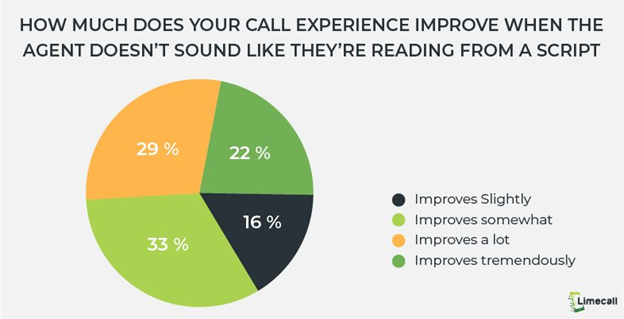Sales techniques are vital in boosting your revenue, supporting customers, and raising your business profile. Because 71% of buyers want to hear from sellers early in the buying process, cold-calling can be the strategy needed to connect with them.
Approaching potential B2B customers and having conversations about your products perfectly positions your sales representatives to resolve any queries and lead customers to their next steps.
Unfortunately, self-sabotaging behaviors are common in B2B cold-calling, damaging your business prospects with clients. It often happens unknowingly, making clients feel uncomfortable or unsure of what you offer.
To avoid falling into those traps, we've identified seven frequent mistakes. Being aware of them allows your teams to improve their approach to B2B clients and optimize the role of cold-calling in your sales outreach.
1. Not Preparing for Your Cold Call
You need to have a good idea of what you want to say on a cold call to ensure the conversation is structured and productive. Potential clients can tell whether you are unaware of who they are or why you're calling them, and they would be displeased. Doing some basic research into their business and how they would use your products can make your calls more effective and engaging for your potential clients.
Likewise, as a sales representative, you need to know as much as possible about your own business and products. You should have knowledge beyond the surface level and be prepared to answer specific questions—for example by using details from your real-time analytics platform.
It's tough to sell to businesses if you are not fully conversant with your own products.
2. Using a Cold-Call Script

Source: Limecall
It can be tempting to use a script to come across as prepared for your call. However, that will not allow much flexibility in the conversation, and it makes it difficult for clients to learn about the products that would benefit them. It also comes across as generic and unproductive to the specifics of the company's situation.
Planning a few key points to cover helps to keep the call on track. But don't make them too detailed or unrelated to the person you are speaking to. Use your research on clients to suggest products for their circumstances. Also, allow the conversation to flow, spending more time on products or services that interest the client.
3. Sounding Unprofessional on the Cold Call
The language you use on a cold call may be the only impression your client gets of your business. Being overly familiar or colloquial with potential clients can make your brand appear unprofessional. Even if you've done your research and know the business well, let your client set the tone and, when in doubt, stay formal but friendly.
Similarly, your cold-calling could land you in conversations with gatekeepers. Although they may not be interested in your products or be responsible for purchasing them, they still deserve respect. Being known as polite by gatekeepers makes future conversations less awkward and serves your business's reputation—especially if you end up landing the client.
4. Asking Closed Questions
The questions you ask on a cold call allow you to tailor your approach to your clients, adapting the information you give to their needs and circumstances. Asking closed questions—those that require only yes or no answers—limits your analysis of the client's business and can make the call feel like hard work.
Instead, ask open-ended questions and facilitate meaningful discussions about your products and services. Those can lead you to the context you didn't know you needed and give prospects a chance to talk about the business in their own words.
For example, asking about the mission of their business, their priorities, and current solutions can create sustained conversations.
5. Talking Too Much on Your Call
Conversations need input from both participants. Talking too much on a cold call means you're not listening to the potential client. Active listening is essential for uncovering questions—and therefore providing relevant information about your product and business.
When a call becomes too one-sided, there's a danger that sales representatives can launch into a pitch while ignoring the prospect. Before pitching, you need to build a relationship and learn what challenges the business faces. If you dive in with a product pitch, it could be off-putting, sounding insincere and impersonal.
6. Having Passive Conversations
The converse of scripting and taking over the discussion is the risk of letting conversations become passive. In attempting to get to know the potential client, sales representatives can go on tangents and lose sight of the goal of the call. That wastes everyone's time and doesn't sell your products and services—failing to bring the call to a conclusion.
Before calling, decide the direction you want the call to follow, including suggesting products and advising prospects of their next steps. Unlike referral program examples or responses to marketing, your business is initiating the cold call, so you should have an overall goal in mind. When the conversation veers off, steer it back on track to make the call a productive one.

Source: zety
7. Ending the Cold Call Early
Having established contact with your potential clients, learned about their needs, and suggested potential product solutions, you may be tempted to end the call and hang up. However, leaving a call without scheduling the next meeting can make it harder for you to regain contact because of not knowing the best times to call and having to go through gatekeepers again.
Likewise, before you hang up, it's important to discuss next steps relevant to the prospect, such as outlining the process for purchasing, directing B2B clients to your explainer videos, inviting your client to a meeting with your other team members, and setting a time frame for sending emails.
* * *
Your B2B cold calls are often the first impression other businesses get of your products and brand. Make that impression the best it can be by avoiding the obvious cold-calling mistakes outlined in this article.
As you call more potential clients, learn from the experience and adapt your cold-calling techniques to engage with them, recommending appropriate products or services. Through productive cold calls, your sales team generates more leads and helps prospects make purchases for their business needs.
More Resources on B2B Cold-Calling
How to Become a Better B2B Cold-Caller [Infographic]
Sales Outreach in Five Steps: How to Run Campaigns That Get Results and Don't Burn Your Leads




